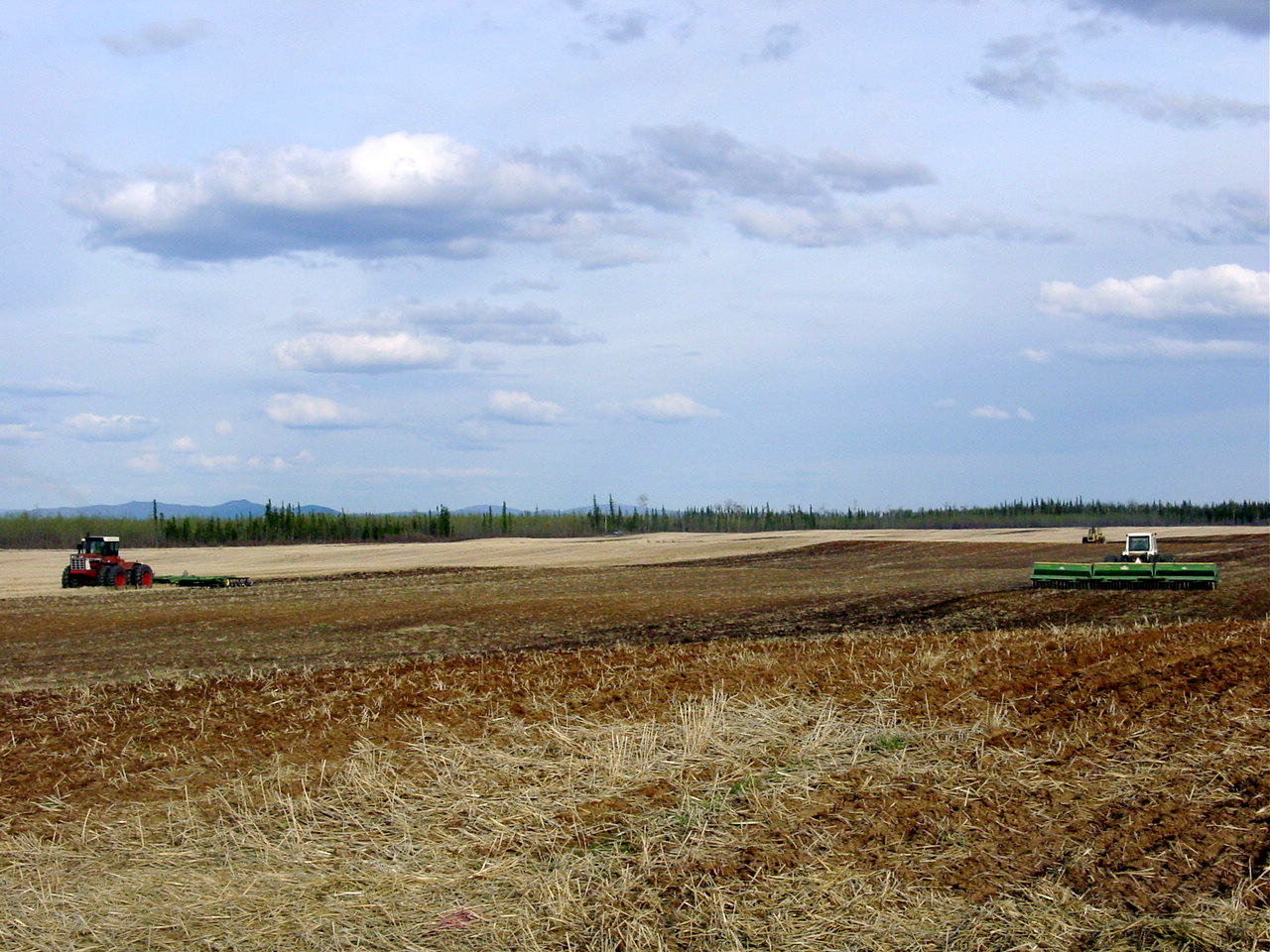As you can see from the photograph above, Alaska is home to numerous lakes. Contrary to popular belief, Minnesota does not host the most lakes in the United States, Alaska does. The major lakes in Alaka are Iliamna Lake, Clark Lake, Minchumina Lake, Aleknagik Lake and Becharof Lake.
Iliamna Lake
Clark Lake
Minchumina Lake
Aleknagik Lake
Becharof Lake
Agriculture
Farming
Agriculture so far in Alaska has not been able to keep up with the demand for farm products. In 1940 Alaskans were importing from the States $8,200,000 worth of farm products a year, including $1,000,000 worth of vegetables, and $5,000,000 worth of meat. Since 1940, due to the war, imports have increased enormously. But there is no doubt that a large market will continue to exist for Alaskan farmers’ products, providing they can raise them and get them to market.
There are four principal farming areas in Alaska: the Tanana Valley, the area near Homer on Kenai Peninsula, parts of Kodiak Island, and the Matanuska Valley.
Matanuska, the most famous of these, is populated by about 2,250 persons, including the residents of the towns of Palmer and Wasilla. There are about 250 farms in the valley, 144 of which were established by the Alaska Rural Rehabilitation Corporation, which started the Matanuska Valley Colonization Project in 1935. Farmers have cleared about 6,000 acres of land and own about 700 dairy cows, some 600 hogs, 1,200 sheep, about 100 horses, and approximately 100 beef cattle.
The chief types of farming in the valley are dairying, general farming, truck farming, and poultry raising. Most of the farmers sell their products through their cooperative, which operates a creamery in Palmer and a dairy in Anchorage. Dairy farming has proved profitable for farmers, but they have found it best to raise from their farms all the vegetables and food crops they can for family living.
Matanuska lies on about the same latitude as Leningrad, USSR, or Oslo, Norway. In the last 19 years, temperatures in the valley have averaged 13° above zero in January and 58° in July. Precipitation over the same period averaged 15.5 inches a year. There is an average growing season of 108 days. The soil is a rich loam. There are few pests or noxious weeds and no snakes—but plenty of mosquitoes!
Farms of 80 to 160 acres owned by the Alaska Rural Rehabilitation Corporation sell, when vacant, from about $4,500 to $6,000, with about one-fifth down payment. These farms may be leased the first year. Other farms are sometimes available from private owners. Undeveloped government land may be purchased at prices ranging from $1.25 to $5.00 per acre. It is usually covered with birch-spruce forest, and must be cleared before it can be farmed. Special settler’s steamship rates can be secured by farmers bringing their own equipment and machinery. If possible, the settler should bring with him livestock, farm machinery, tools, and furniture. (http://www.historians.org/projects/giroundtable/Alaska/Alaska9.htm)







No comments:
Post a Comment